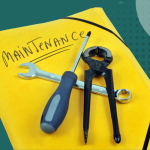Routine maintenance is good for your car but can be bad for the environment. Washing it consumes a ton of water and produces wastewater with harmful chemicals. Improperly disposed of car fluids and parts can contaminate waterways and add to landfills. Fortunately, making small changes can make a huge difference. Here are some sustainable car care tips that can save money and extend your vehicle’s lifespan.
1. Save Water With Waterless Wash Sprayers
Carwashes consume more than 50 gallons of water per car, and carwash stations can use up to 2,600 gallons per day. Meanwhile, most people use around five to 100 gallons to wash a vehicle, depending on whether they use a hose or a bucket. If your car isn’t covered in dirt, use waterless wash sprayers to clean and save water.
A waterless wash sprayer contains high-lubricity agents that lift dirt particles. It creates a barrier between the dirt and the paint, allowing you to wipe off the grime without damaging your car’s surface. The solution works best with a microfiber towel. Once the vehicle is dirt-free, use another dry towel to remove residue and buff the surface.
Some waterless wash products also contain sealants and waxes that provide extra protection against the elements. The only downside is that they’re not as effective if your car is covered in dirt and mud after driving through bad weather or rugged terrain.
2. Choose Eco-Friendly Car Cleaning Products
If your car is too dirty for a waterless wash, it’s best to wash it the old-fashioned way. However, make sure your cleaning products don’t have these harmful chemicals:
- Ammonia: Can damage car surfaces and cause skin burns and respiratory irritation
- Petroleum distillates: Can cause serious skin, respiratory and nervous system problems
- Phosphates: Contribute to algal blooms that deplete oxygen in waterways
- Hydrochloric and sulfuric acids: Highly corrosive
- Hydrofluoric acid and ammonium bifluoride: Can cause severe and delayed skin burn
Some chemicals, like phosphates and hydrochloric and sulfuric acids, are common in detergents that break down dirt and grease. Others are ingredients in waxes, protectants and cleaners. Carwash wastewater combines these contaminants, which need advanced treatment methods to decontaminate. Otherwise, the runoff can seep into waterways and poison ecosystems.
Eco-friendly cleaning products contain little to no hazardous chemicals. That means they’re good for you and the environment. In some cases, they’re even the better option for your car, as they lack the compounds that can damage surfaces. Choose cleaning solutions with EPA Safer Choice and EWG Verified labels, which ensure the products comply with high safety standards.
Be sure to limit water consumption while using sustainable car care products. Use buckets or a hose with a self-closing nozzle. If there’s a lot of dirt, loosen it with a light pre-soak before washing.

3. Use Microfiber Cloths for Cleanups
Disposable towels are convenient but not sustainable, so switch to microfiber cloths for all your car cleaning needs. Microfiber cloths have fine fibers that can trap and hold dirt and bacteria, allowing you to thoroughly clean surfaces. They also work well with water, removing the need for harsh chemical cleaners that are bad for the environment.
Microfiber cloths are reusable, saving money and reducing waste in the long run. They can be used for everything from removing residue from a flushed radiator to cleaning dust and fingerprint marks from windows and dashboards.
While these versatile cleaning tools can last years, some care can extend their use. Wash them separately from your other laundry in mild liquid detergent and warm or hot water. Add a spoonful of white vinegar to the wash cycle for a deep clean.
4. Invest in a Tire Pressure Gauge
Car care tips always include maintaining the right tire pressure. Properly inflated tires wear out evenly, keep your car’s systems working efficiently, improve fuel economy and reduce emissions.
Most modern cars have a tire pressure monitoring system with an indicator on the dashboard that alerts drivers when the pressure is low. However, conducting regular manual checks with a tire pressure gauge is still a good idea, as the system can sometimes malfunction.
Consider a digital gauge for better precision, especially at lower pressure points, or an analog gauge with a larger dial for more accurate readings. Choose a tire pressure gauge around twice your car’s recommended tire pressure. Check your tires at least once a month and before long trips.
5. Drive on Eco-Friendly Tires
Manufacturers produce around two to three billion tires a year, generating a lot of carbon emissions. They’re also unbiodegradable. Consider swapping out your set for eco-friendly tires. Manufacturers create them from recycled and sustainably sourced materials, using processes that produce less greenhouse gases.
Eco-friendly tires are designed to roll using less energy, resulting in better fuel efficiency and lower emissions. The low rolling resistance helps extend the tires’ service life, so you won’t need to replace them as often.
Drop old tires off at tire retailers or recycling centers. Find out if your city has special tire amnesty programs or collection events, which offer a free or low-cost way to dispose of your tires.
6. Use Maintenance Scheduling Digital Tools
Diesel-powered passenger vehicles release around 10,100 grams of CO2 per gallon of fuel burned, while gas-powered cars emit about 8,800 grams of CO2 per gallon. That can quickly accumulate, so it’s best to make every trip count.
Staying on top of your maintenance schedule is crucial to sustainable car care because it prevents unnecessary service trips. A single auto repair shop visit can complete many essential upkeep tasks, which saves fuel, reduces emissions and prevents excessive wear on certain car parts.
A good way to keep up with maintenance is to note all essential and recurring upkeep tasks in your mobile phone calendar. You can also download a car maintenance app. Here are some helpful features to look for:
- Service notifications
- Service and repair history tracking
- Multi-vehicle support (if you have more than one car)
- Real-time diagnostics integrated with a trouble code scanner
- Fuel and expense tracking
- Repair and maintenance cost estimates
- Roadside assistance directory
- Recall alerts
7. Dispose of Fluids and Parts Responsibly
When it’s time to replace your car’s antifreeze, brake coolant, motor oil and other hazardous fluids, make sure you discard them properly. These fluids are flammable and toxic for the environment because they can degrade soil health, contaminate water supplies and poison ecosystems.
Old or used motor oil from a single oil change can pollute a million gallons of water, so if you’re changing your oil on your own, collect the used fluid in a leakproof container. Take it to a household hazardous waste management facility or drop-off site for disposal. Some auto repair stores and mechanic shops also accept used car fluids.
If you replace old or faulty parts, think twice about throwing them in the trash. You can sell functional parts to scrap yards and take the rest to a recycling center to keep the used parts from adding to landfills.
8. Save Electricity With Smart EV Charging Practices
Driving an electric vehicle (EV) means zero tailpipe emissions and superior energy-efficient engines. However, that doesn’t mean they’re completely good for the environment. EVs operate using electricity, which can come from fossil fuels. If you drive an EV, here are some car care tips to charge it efficiently:
- Choose charging stations powered by solar, wind or other renewable energy sources.
- Map out your area’s slow and rapid charging stations and plan your charging sessions with their power output.
- Charge at night or during off-peak periods.
- Set alarms to avoid overcharging your EV and preserve battery health.
- Use proper outlets and the right charging equipment to prevent electrical hazards, overheating and fires.
- Inspect cables and connectors for damage before charging.

Small Changes, Big Environmental Impact
These car care tips might seem small, but following them long-term will rack up benefits, from cutting water and energy costs to optimizing your car’s performance. Adjust your car care habits and commit to the changes to give back to the environment while keeping your vehicle in top condition.
Frequently Asked Questions
What Is the 30/60/90 Rule for Car Maintenance?
The 30/60/90 rule is a schedule that recommends certain services and inspections every 30,000 miles, 60,000 miles and 90,000 miles. Here’s an overview:
At 30,000 miles: Change oil and filter, replace air filter, rotate the tires and inspect brake systems.
At 60,000 miles: Repeat the previous services, flush the car fluid, replace spark plugs and conduct extensive inspections.
At 90,000 miles: Repeat previous services, replace worn-out parts and contaminated fluids, and refresh major systems.
What Is the Most Environmentally Friendly Way to Wash a Car?
You can use waterless washes to save water or use eco-friendly car cleaning products to reduce contaminated water runoff. Combining these sustainable car care methods also works.
What Are Important Maintenance Tips for a Car?
Staying on top of a scheduled maintenance routine is a must. Essential tasks include regularly washing your vehicle and checking the state of its tires, oil, filters, car fluids, brakes, wipers, lights and battery. Pay attention to dashboard lights and address issues immediately. Use digital tools to cover all your bases.
References:
- Science Direct: Carwash wastewater characteristics – a systematic review study
- PubMed Central: Techno-environmental study on the consequences of carwash wastewater and its management methods
- Science Direct: Car harm: A global review of automobility’s harm to people and the environment
- EPA: Greenhouse Gas Emissions from a Typical Passenger Vehicle
- EPA: Managing, Reusing, and Recycling Used Oil





